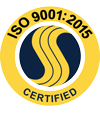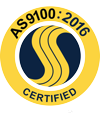✔ Standard-stocked product*
Extruded and drawn
Aluminum is the main alloying metal added to copper in aluminum bronze alloys such as C64200,
also known as C642. A variety of aluminum bronzes of differing compositions have found
industrial use, with most ranging from 5.00% to 11.00% aluminum by weight, the remaining
mass being copper. Other alloying agents such as iron, nickel, manganese, and silicon are
also oftentimes added. Aluminum bronzes are most valued for their high strength and
corrosion resistance.
*Solids is standard stocked.





 4634-C64200
spec sheet
4634-C64200
spec sheet








